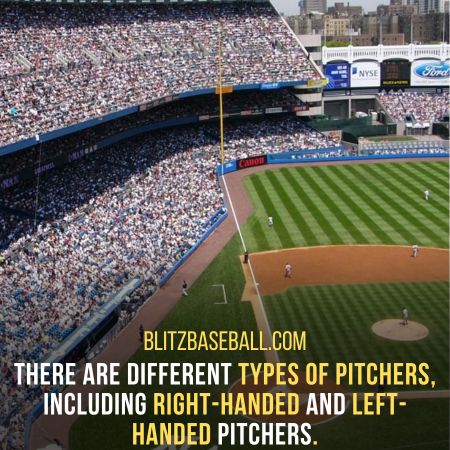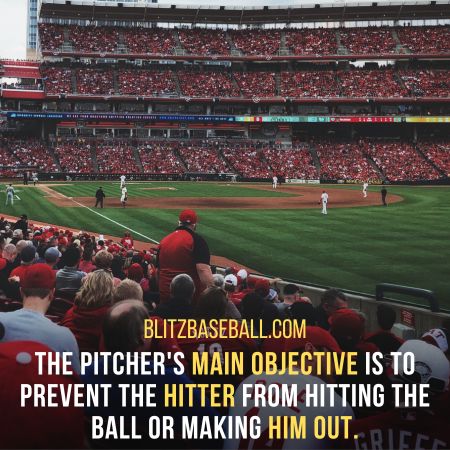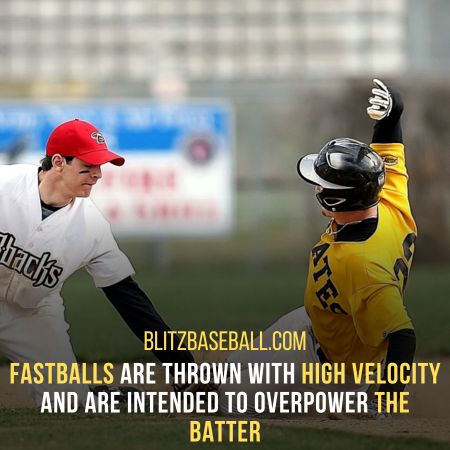Baseball is a sport that requires a combination of strategic thinking, physical prowess, and precise execution. Among the key players on the field, the pitcher holds a central role in the game.
What is a pitcher in baseball? The pitcher is responsible for delivering the ball to the baseball catcher with the aim of preventing the opposing team’s hitters from making contact or getting them out.
This article aims to provide a comprehensive overview of what a pitcher in baseball entails, covering various aspects such as types of pitchers, pitching styles, roles, responsibilities, equipment, and statistics.
From understanding different pitching techniques to analyzing the importance of mental toughness and game knowledge, this article seeks to delve into the intricacies of the pitcher’s position.
By exploring the fundamentals, strategies, and statistical measures of pitchers, readers can gain a deeper appreciation for the impact and significance of this crucial player in the game of baseball.
Key Takeaways
- The pitcher’s main objective is to prevent the hitter from hitting the ball or making him out.
- There are different types of pitchers, including right-handed and left-handed pitchers, who use various types of pitching styles to make it difficult for the batter to hit.
- Pitchers play a crucial role in the defense team and control the ball, covering areas beyond their range and contributing to the game.
- Necessary characteristics for a successful pitcher include a strong and coordinating throwing arm, good strong legs, mental toughness, good command over pitching, knowledge of surroundings, willingness to listen to feedback, and a layer of arrogance.
Types of Pitchers: What Is A Pitcher In Baseball
There are various types of pitchers in baseball, including right-handed and left-handed pitchers, who use different pitching styles to make it difficult for the batter to hit.
One distinction among pitchers is between starting pitchers and relief pitchers. Starting pitchers are typically the first pitcher to take the mound at the beginning of a game and are expected to pitch for a longer duration, while relief pitchers are brought in later in the game to provide relief for the starting pitcher.

Another distinction is between pitchers who primarily rely on two-seam fastballs and those who use breaking balls as their main pitching strategy.
Fastballs are thrown with high velocity and are intended to overpower the batter, while breaking balls, such as curveballs and sliders, have movement and aim to deceive the batter with their change in direction or speed.
Pitching Styles
One of the key aspects of a pitcher’s role in baseball is their ability to utilize various pitching styles to make it difficult for the batter to hit the ball. Pitching techniques and strategies play a significant role in a pitcher’s success on the field.
They can use a variety of pitches, such as the change-up, curveball, cutter, and fastball, to deceive the batter and keep them off balance. Each pitcher may have their own signature pitch, which they have mastered and become known for.
For example, Mariano Rivera was famous for his devastating cut fastball, while Clayton Kershaw is known for his sharp curveball. These famous pitchers and their signature pitches demonstrate the effectiveness of different pitching styles in baseball.
| Pitching Style | Description |
|---|---|
| Change-up | A fastball with a slight lateral movement, breaking towards the pitcher’s glove-hand side. |
| Curveball | A breaking pitch that has a sharp downward break towards the plate. |
| Cutter | A pitch is thrown with maximum velocity. |
| Fastball | A pitch thrown with maximum velocity. |
| Knuckleball | A pitch that has almost no spin, resulting in unpredictable movement. |
| Slider | A breaking ball that goes to the batter down to the strike zone faster than a curveball. |
By employing different pitching styles, pitchers can keep the opposing hitters guessing and increase their chances of getting outs. These techniques and strategies are constantly evolving, as pitchers strive to find new ways to deceive batters and gain an advantage on the field.
Role and Responsibilities
The role and responsibilities of a pitcher in the game of baseball encompass various tasks and strategic decisions that contribute to the team’s defensive efforts and overall success.
A pitcher’s influence on the game is significant, as they are responsible for controlling the ball and preventing the opposing team from scoring runs. The importance of control cannot be overstated, as a pitcher must be able to accurately place their pitches to keep hitters off balance and induce weak contact or strikeouts.

The responsibilities of a pitcher include:
- Throwing pitches with precision and varying speeds to keep the batter guessing.
- Fielding their position and covering bases when necessary.
- Working closely with the catcher to develop a game plan and execute pitches effectively.
- Adapting to different game situations and adjusting their approach accordingly.
- Maintaining focus and mental toughness, especially in high-pressure situations.
- Communicating with teammates and coaches to ensure everyone is on the same page.
Overall, the pitcher’s role is vital in the game of baseball, and their ability to control the ball and make strategic decisions greatly impacts the outcome of each play and the success of the team.
Equipment and Statistics
Equipment used by pitchers in the game of baseball includes items such as a ball cap, baseball gloves, and cleats. These pieces of equipment are essential for pitchers to perform their roles effectively on the field.
The ball cap provides protection from the sun and helps pitchers maintain focus during the game.
Baseball gloves are crucial for catching and fielding the ball, allowing pitchers to make plays and prevent hits.
Cleats provide traction and stability on the pitching mound, helping pitchers maintain balance and generate power in their throws.
In addition to equipment, pitchers’ performances are evaluated based on various statistics. Key metrics include wins, earned run average (ERA), strikeouts, base on balls, games started, hits per nine innings, home runs allowed, and saves.
These statistics provide insights into a pitcher’s effectiveness, control, and ability to prevent runs. Wins indicate the number of games a pitcher has won, while ERA measures the average number of earned runs allowed per nine innings.
Strikeouts showcase a pitcher’s ability to overpower hitters, and base on balls demonstrate their control and command over their pitches.
Overall, pitcher statistics play a significant role in evaluating their contributions to the team’s success.

Frequently Asked Questions
What are the key qualities and skills that make a successful pitcher?
Key qualities and skills that make a successful pitcher include strong and coordinating throwing arm, good strong legs, mental toughness, good command over pitching, knowledge of surroundings, willingness to listen to feedback, and a layer of arrogance. Pitching techniques and mental toughness are crucial for success.
How do pitchers communicate with their catcher during a game?
Pitchers communicate with their catcher during a game through a series of non-verbal signals known as pitcher catcher signals. These signals are used to indicate the desired pitch selection and are essential for maintaining a coordinated and effective defense strategy.
What are some common pitching strategies used by pitchers to outsmart batters?
Pitchers use a variety of pitching strategies to outsmart batters, including pitch selection and pitch sequencing. They strategically choose pitches based on the batter’s weaknesses, varying speed and location to keep the batter off balance and increase the chances of getting him out.
How do pitchers train and practice their skills?
Pitchers train and practice their skills through various pitching drills and a structured workout routine. These drills focus on improving their throwing mechanics, building strength and endurance, and developing pitch control and accuracy.
Who are some legendary pitchers in baseball history?
Famous pitchers in baseball history include Bob Gibson, Pedro Martinez, Greg Maddux, Roger Clemens, and Randy Johnson. These pitchers have achieved remarkable pitching records and have left a lasting impact on the sport.
Conclusion
In conclusion, pitchers in baseball hold a significant role in the game, with their objective being to prevent hitters from making contact and getting them out.
They possess a strong throwing arm, good command over pitching, mental toughness, and knowledge of the game.
Pitchers use various pitching styles and types of pitches to make it challenging for the batter to hit.
They also have specific responsibilities on the field, such as covering the right infield and following specific rules.
Pitcher statistics, such as wins, strikeouts, ERA, and saves, provide insight into their performance.
Overall, pitchers greatly impact the outcome of baseball games.
